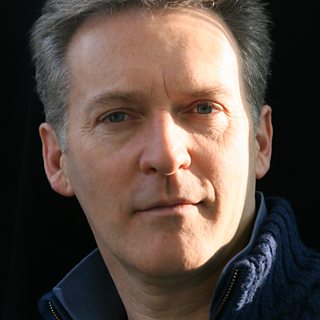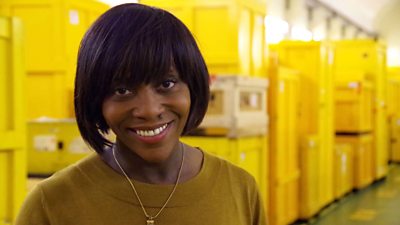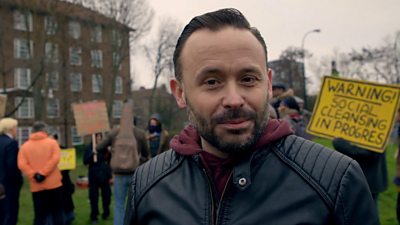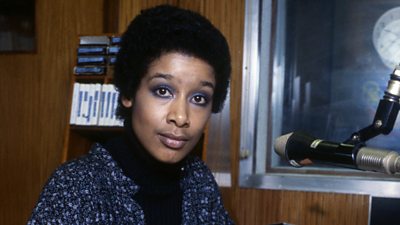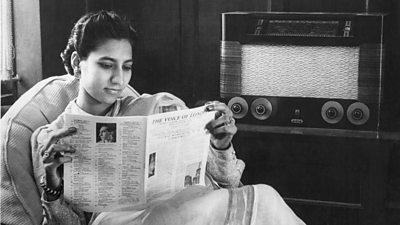So, I'm blind. Why shouldn't I be a ����ý television director?
WARNING: Some scenes in this video may be upsetting. They reflect the time when made.
Early years
From the 1920s to 1940s there was very little portrayal of disability on the ����ý. It reflected the norms of the day, where disability was rendered invisible. In general, disability in this period tended to mean physical disability only, and when presented was done so as ‘a problem’ with pity at its heart.
One of the few exceptions, starting from the 1950s, was the visually impaired actor Esmond Knight, who appeared in many TV dramas - from St Joan to Our Mutual Friend.
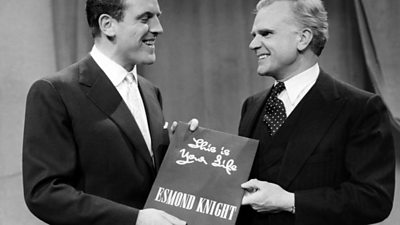
Programming firsts
The first targeted programming for disabled audiences came in the 1950s with a strand for the deaf/hard-of-hearing community, and especially for children.
Such content was included within the popular TV show For the Children. It was followed by the ground-breaking series Vision On, which launched in 1964 and was presented in British Sign Language. This was a huge hit with all children – deaf or not – because of the dynamic and engaging on-screen personality of Tony Hart.
For blind adults, In Touch launched on the specialist radio station Network 3 in 1961, shifting to Radio 4 from 1967. Its presenters included David Scott Blackhall and Peter White.
Jump forward to 1981, See Hear began its long-running on-air presence and included deaf presenters such as Paddy Ladd, Maggie Woolley and Clive Mason. This represented a real shift in perspective and ethos around programming for disabled audiences – from regular deaf news through to its famous annual pantomimes.
Back on radio, Does he take Sugar? hit the airwaves in 1986. The show’s title reflected the way many disabled people were treated socially, i.e. unable to speak for themselves.
These programmes were supported by technology developments such as Ceefax, the world’s first teletext information service launched in 1974.
In Focus...
-

Peter White
The ����ý's first Disability Affairs Correspondent -
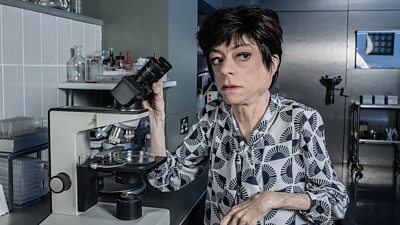
Liz Carr
Trailblazer for disabled adult actors -

Ade Adepitan
Proving versatility from sports star to TV personality
To the mainstream TV industry, there’s an invitation to tap into a neglected area of programme-making talent.
Strategic focus
Things really moved up a gear with the creation of the world’s first ever Disability Programmes Unit (DPU) in 1992. The Unit supported journalism, along with commissions in comedy with agony aunt Daphne Doesgood as well as lifestyle strands including From the Edge and Feelings. There was also a ����ý One commission called The Invisible Wall, which used secret cameras to show the shocking discrimination happening to disabled people on the street.
All this represented a big shift away from earlier disability representation. At the time, the Unit’s editor Kerena Marchant said: “In the past, disability programming has been ‘about the disabled’ and has been made by able-bodied programme makers, steering a cautious course trying not to offend the disability movement.”
Not anymore. Marchant again: “The DPU message to disabled people on the edge of the industry is ‘welcome to television’. To the mainstream TV industry, there’s an invitation to tap into a neglected area of programme-making talent.”
It was around this time, in 1995, that the ����ý also appointed its first Disability Affairs Correspondent Peter White who covered the role until 2014 when Nikki Fox took over.
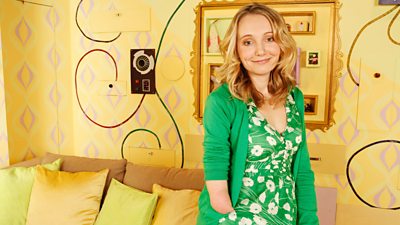
Behind the camera
Entirely new ground was broken behind the camera in 1998 with the appointment of Damon Rose – the first blind person to win a place on the coveted TV directors’ training course.
Overcoming prejudice was the main problem, he said: "I do things differently, but I'm not ashamed of that. I'm equal but different. I'm happy to be the first blind person doing this. I'd like to think this coverage might open people's minds a bit."
Damon would go on to launch the Ouch! It’s a Disability Thing website in 2002, followed by the Ouch! podcast four years later. Both offer news, stories, comments and advice on all aspects of life as a disabled person.
Towards the mainstream
At the turn of this century, ����ý One launched its One ����ý on-air branding, which featured wheelchair basketball-players. Children’s broadcasting continued to be at the forefront of positive representation including disabled characters in Grange Hill (1994-98), Tracey Beaker (2002) and Desperados (2007) with its wheelchair basketball team. Plus, there was Something Special (2003) – an early years programme which used Makaton sign language.
Not all reactions were positive, however. In 2009, Cbeebies presenter Cerrie Burnell, who was born without the lower section of her right arm, received audience complaints about her appearance. Cerrie and the ����ý stated that “disability is not a negative label”.

'About time'
Mainstream drama, and in particular soaps, also enhanced its portrayal of disabled characters in the nineties.
In 1992 in Eldorado, character Nessa regularly showed off her scars when going for a swim and used a wheelchair. Just over a decade later, Holby City was regularly featuring a disabled anaesthetist.
Then in 2009 EastEnders cast its first disabled actor, David Proud, as main character Adam Best. The show’s executive producer Diedrick Santer commented that it was “about time” the show cast an adult actor with disabilities as a repeating feature in the soap. Silent Witness followed with its casting of Liz Carr as forensic scientist Clarissa Mullery in 2012.
Broader disability coverage
Disability is not just about what is visible. Recently, there has been an increased focus on long-term mental health with personalities including Stephen Fry and Nadiya Hussain telling their stories to raise awareness.
In 2019, the ����ý pledged to include more disabled entertainers and actors on mainstream shows, from Who Do You Think You Are? to high-profile dramas such as His Dark Materials. Disabled people are now fronting News and Current Affairs, Weather, Travel and Sport – not just the Paralympics. Plus they are competing as sequinned competitors in Strictly Come Dancing.
The simple aim is that this should no longer be remarkable at all.

